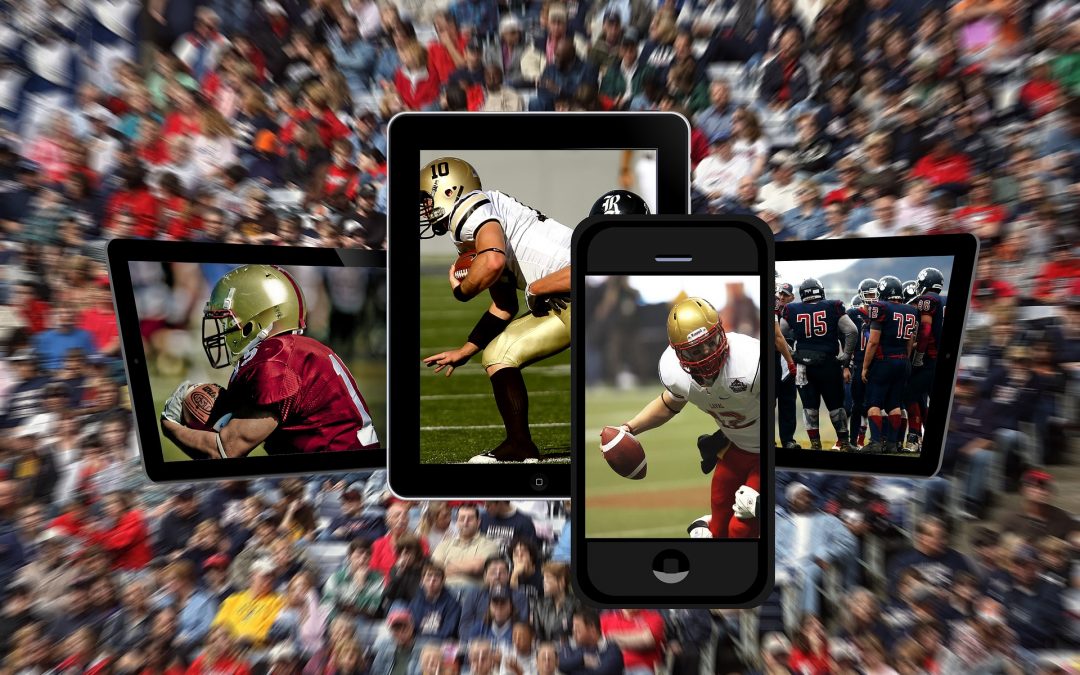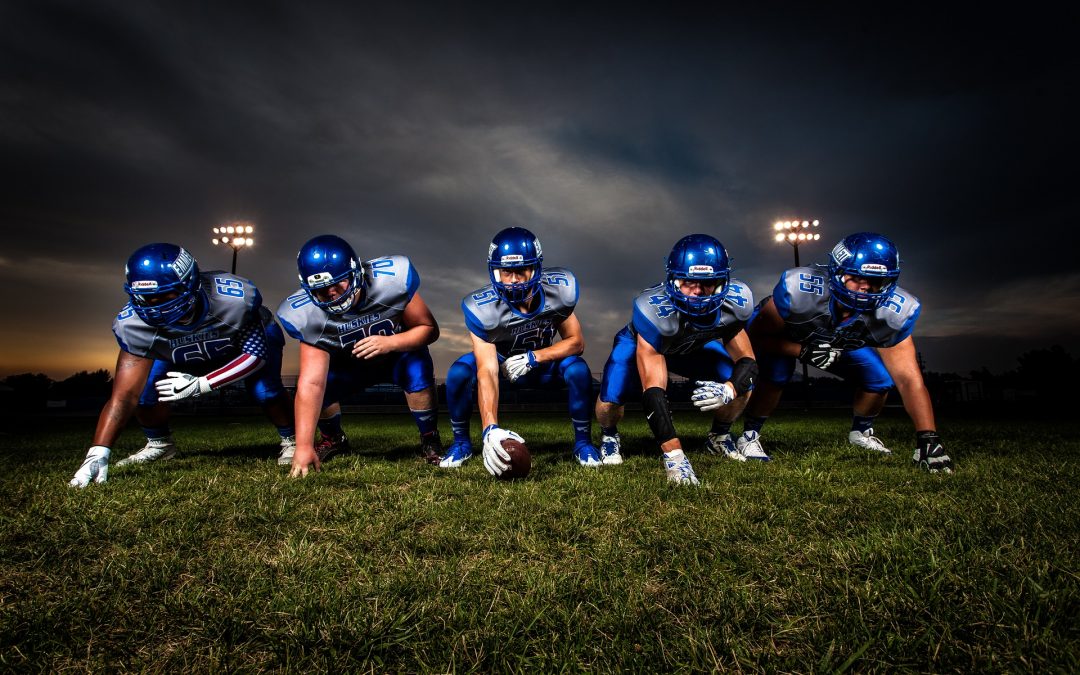
by Don Basile | Apr 10, 2017 | Sports, Tech
2017 Agreement Between Players and NBA Says Practice Games Only
From Fitbit Trackers for the average consumer to the Zephyr Bioharness, which is allowed by Major League Baseball for players during actual games, wearable sports technology is hitting fields, tracks and gyms right and left. But not the basketball courts of the NBA, according to a recent decision between the organization and the Players Association.
The collective bargaining agreement released earlier this year states explicitly (and more than 250 pages into the document) that, “No Team may request a player to use any Wearable unless such device is one of the devices currently in use as set forth in Section 13(f)below or the device and the Team’s cybersecurity standards have been approved by the Committee.”
Section F makes it clear that players will only wear the device on a voluntary basis. The agreement further states that devices can be worn during practice— but not games.
Wearable devices for professional athletes measure everything from movement information (such as distance, velocity, acceleration, deceleration, jumps, and changes of direction), to biometric information (heart rate, heart rate variability, skin temperature, blood oxygen, hydration). Depending on the device, other health, fitness and performance information is gathered.
The technology is not, by today’s standard, new. The Adidas miCoach Elite Team System (one of approved devices for practice) hit the market in 2013. It’s touted, by Adidas, as the first of its kind “that uses physiological data in real time sending it straight to a coach’s tablet on the sideline. The system not only provides real-time insights during training, but tracks total training impact, collects and manages data and is highly portable.”
The goal of the system was to “offer insights into player performance and work rate, helping teams achieve and maintain peak physical performance.”
Apparently unconvinced about the need for wearable devices—but well aware that there’s no turning back from the wearable tech trend—the 2017 agreement sets up a committee to continue to explore the issue.

by Don Basile | Mar 23, 2017 | Sports, Tech
“There’s no better time to strike than when you’re winning.” That’s according to Cedric Brown, Interactive Marketing Content Manager for the Miami Heat. On a recent panel called “The Evolution of Sports Fan Experience, Powered By Technology, hosted by Social Media Week Miami, Brown and other Miami tech marketing specialists came together to talk about how Miami teams are modernizing the fan experience–and why a winning team can make all the difference.
Sports teams across the country are undergoing a shift from paper to mobile for tickets. In 2016, this is mostly a welcome change: as Brown points out, “people just don’t use paper anymore.” Four or five years ago, the Miami Heat introduced mobile ticketing at a time it might have not been so popular, if it weren’t for one fact: The Heat were NBA champions from 2011 through 2014. “We noticed that fans hate change,” Brown said. “It’s a lot easier to push a mobile app….when they come to see a great product on the floor.”
Ticketing is just one of many changes disrupting the sports fan experience, but it’s an important one. More people are getting tickets on their phones now than ever, with mobile ticketing expected to account for one in two tickets by 2019. The New York Yankees recently switched over to mobile ticketing entirely, and many teams have apps that makes purchasing easier.
Why make this shift to mobile? There are great benefits on both ends: for fans, there is an element of convenience, fun, and cool rewards; for teams and brands, it is an opportunity to energize fans, bring in additional revenue, and reach sometimes aloof millennial audiences.
Technology can get fans excited, sure, but what excites fans most of all? A winning team. Unfortunately, it’s hard to be excited about poor performance. There’s a cycle: winning teams energize fans, who enable marketers and developers to implement new user-servicing technology, which energizes fans even more, who in turn (hopefully) energize the team to continue winning. Wherever this cycle begins, the idea is simple: fans should have an awesome experience. And losing teams? Fans won’t come out for them, the team won’t profit, less technology will be implemented…. You get the idea.
The relationship between winning, fan experience and technology, of course, begs the question: where does money fit into the equation? The teams with the most wins have the highest payrolls, and are therefore more likely to attract talented CEOs, coaches, and athletes. According to Forbes, “the highly sought-after player is motivated by a combination of the following influences: big money, big money markets where a player can earn bigger-time endorsements, big lifestyles, and the opportunity to play for the biggest time-honored franchises in the history of the sport.”
In a ranking of 2016’s most tech-savvy sports teams, then, it’s no coincidence that the New York Yankees come out on top followed by the Dallas Cowboys.
Where do 2016’s champions stand? The Denver Broncos, who won the most recent Super Bowl, were ranked #14—the second most innovative NFL team. The Broncos having been betting on technology both before and after winning the last two Super Bowls. They have used augmented reality to partner with brands, implementing a “Twitter vending machine” to reward fans, and most recently to host a STEM hackathon.
The Cleveland Cavaliers, who won the NBA champion and are ranked at #10, have adopted 3D mapping technology, virtual reality behind-the-scenes campaigns, and will provide play-by-play “augmented audio” to fans soon.
Then you have the Chicago Cubs, who won the World Series for the first time in over a century. Some have suggested it was their use of big data in analyze pitching performance that helped them finally seal the deal. We’ll have to see if the momentum from the win motivates them to lean into tech trends even more.
All things considered, the Miami Heat remains a great example of how winning empowers teams to take technology to the next level. Their multi-year success brought their fans from a local level to a global level, and ever since the team has been leveraging technology to reach fans across the world. They have redesigned their mobile app and are moving swiftly toward all-digital ticketing. Other winning teams should follow suit.
It’s true that a majority of fans are destined for disappointment regardless of how innovative the fan experience is made to be. But making the journey engaging is worth the while. As long as teams can keep fans on board through the highs and lows that inevitably come, they should be able to make gains in technology too. Just like Brown said—strike when you’re winning, and hope that when you strike out, the fans will stay.

by Don Basile | Mar 1, 2017 | Sports, Tech
Professional athletes make great money—but only for a few years—and far too often their financial gains are lost shortly after they stop playing.
While it varies athlete to athlete, on average an NFL player’s career will last just under four years and Major League Baseball players get a whopping 5.6 years, according to The Bleacher Report.
During that time, these pros can make (again, on average) anywhere from $1.5 million to $4.8 million.
That money has to last them a lifetime. Savvy players (and their agents and managers) know this, which means they know that they have to invest. Interestingly, more and more athletes are funneling their funding towards tech start-ups, whether as straight-up investments or as full-on partnerships.
A recent article in Entrepreneur discusses the start-ups, everything from coaching to photography apps, that NBA stars Steph Curry and Kevin Seraphin are backing.
The National Football League Players Association is so supportive of sports-meeting-start-ups that last year the organization facilitated a “tech tour.” Players toured companies in Silicon Valley, talking with game designers at EA, learning the ins and outs of businesses such as Uber, really seeing inside the innovations.
Why technology? There are several possible reasons. As the Entrepreneur article points out, these are athletes who’ve grown up with technology.
There’s also the potential for high returns—which could appeal to the competitive nature of professional athletes. Apple is still one best-performing stocks ever.
Regarding the start-ups, there’s evidence that playing a competitive sport makes you less-likely to be alarmed by high-risk investments.
Besides, while 90 percent of start-ups fail that’s still better odds than going pro. The NCAA reports that less than two percent of college basketball and football players make it to the pros. The odds are better for baseball, at just over nine percent.
Whether it’s the appeal of a competitive marketplace, the thrill of the risk, or simply wanting to invest in their own financial future, putting money into technology does seem to be trending among athletes.
Which is great, given the long history of pros going broke after successful athletic careers.
While technology and start-ups might seem like a risk for people new to the investment game, investment pros and pro athletes know, the only shots you’re guaranteed to miss are those you don’t take.

by Don Basile | Feb 24, 2017 | Sports, Tech
Among the most intriguing innovations in wearable technology is high-tech clothing. Will we all be decked out in smart clothes from head-to-toe in the future? Will our shirts and sneakers be collecting data and making suggestions? Some people think so, and it could be athletes that are the first to roll up their sensored sleeves and getting down to business.
Companies are already designing high-tech clothing for athletes. For example, take “e-skin” by the wearable tech company Xenoma. This smart shirt tracks gestures and makes suggestions on form to athletes.
How does it work? E-skin is made with Printed Circuit Fabric, which has stretchable sensors and wires embedded into the textile during manufacturing. A centralized “hub” sits in the middle of the shirt, able to transmit data to a smartphone, tablet, or other devices.
Xenoma offers an e-skin software development kit so that developers can create apps that take advantage of e-skin’s innovative capabilities. The kit starts at $5000.
One use of e-skin that you can witness on video? E-skin for golfers. The shirt succeeds in analyzing the wearer’s swing, form and stance. Then it provides feedback to help the athlete improve. It could do much the same for any sport.
Xenoma also showed off e-skin this January at the Consumer Electronics Show (CES), this time for its gaming capability. Able to record data at 60-frames a second, e-skin can translate your movements into digital form, animating game characters on screen.
What more do you need from e-skin? Try machine washable (check), rechargeable (check), and long-lasting (it has a four-hour battery life). Xenoma is expected to release a consumer version for around $600 by mid-2017.
For gamers, especially of the VR variety, it could be an amazing way to get an immersive and active experience out of gaming. I expect it will be even better for athletes, acting as a very personal trainer that knows your body better than you do. For the rest of us, it can remind us to breathe and relax, let us know if our posture is poor, and encourage us to live a more active lifestyle.

by Don Basile | Feb 15, 2017 | Sports, Tech
Every year, the Consumer Electronics Show unveils the hottest new tech products and trends, which predictably leave tech junkies drooling with anticipation. This is just as true for sports technology, which makes its debut in various iterations at CES to the delight of those like myself with interest in this growing field.
2017’s CES opened on January 5 in Las Vegas with just as much fanfare as usual, and with it a slew of amazing new products.
FitBit, which recently acquired Pepple, unveiled its new personal trainer app. It is also partnering with nutrition app Habit, indoor training bike company Peloton, and VR sports pioneer VirZOOM, and even Uber — though we may just have to wait and see what comes of these. Nonetheless, FitBit has proven itself an industry leader in athletic wearable tech.
Another product that cropped up at CES was Athlete Recovery Sleepwear, introduced by Under Armor. In partnership with Tom Brady, Under Armor’s product promises to help regulate body temperature and improve sleep for better daytime performance.
Other smart apparel at CES include the Pro Team Shirt, which comfortable operates as a heart monitor and GPS, a smart baseball training shirt from SwingIQ, and a smart running shoe by Sensoria and VIVOBAREFOOT.
Biometric data wearables are also proving to be a trend, and the less visible, the better. According to Sports Illustrated, a trend called “hearables,” as demonstrated by in-ear data trackers by Bodytrak, KUAI, and the Dash. These small devices are perfect for collecting internal metrics, like core body temperature, while also having the ability to play music. Fun!
All in all, it looks like another successful CES for athletes and for fans. It’s clearer than ever that as technology gets more advanced, so does the athletic prospects and fan experience of those that adopt it.




